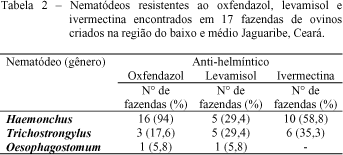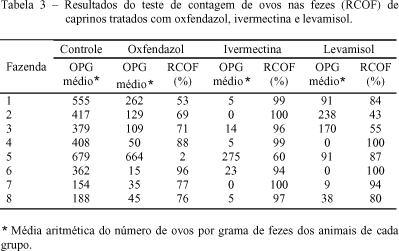The control of gastrointestinal nematodes parasitism is made basically with anthelmintics. Control failure is the first sign of anthelmintic resistance development. The actual situation of anthelmintic resistance prevalence in commercial farms of sheep and goats in Brazil is unknown. The aim of this work was to estimate the occurrence of oxfendazole, levamisole and ivermectin resistance in sheep and goats from medio and baixo Jaguaribe region by faecal egg count reduction followed by coprocultures. The work involved 25 farms (16 sheep farms, 7 goat farms and one of sheep and goats). Data were analysed by RESO (1989). The prevalence of resistant nematodes to oxfendazole, levamisole and ivermectin was respectively 88%, 41% and 59% in sheep and 87.5%, 75% and 37.5%, in goats. Haemonchus was the most prevalent genus in the resistant population to all anthelmintics in sheep and goats, followed by Trichostrongylus and Oesophagostomum.
goat; sheep; anthelmintic; resistance; Brazil; nematodes




